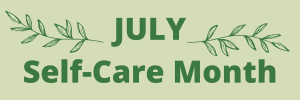What is the RAIN meditation?
RAIN is an acronym that represents four sequential steps that guide you on how to pay closer attention to your internal experience in the present moment. Mindfulness teachers and practitioners across the world have adapted the RAIN meditation for use in different situations and there are many variations of what each letter represents.
Through my work supporting other women and in my own personal development I’ve found the following RAIN variations useful:
- R – RECOGNISE what is happening right now in your body (sensations, emotions, thoughts)
- A – ALLOW / ACCEPT / ACKNOWLEDGE what is present in this moment without judging it or yourself
- I – INTEREST / INVESTIGATE your internal experience with an attitude of curiosity, kindness and compassion
- N – NON-IDENTIFICATION means understanding that your emotions are not ‘you’ and they do not narrowly define who you are. What is it that you NEED at this moment? What needs to be NURTURED right now? What is your NEXT step to nurture yourself?
What is the RAIN meditation used for?
Meditation is not always easy. The wandering mind finds plenty of distractions which means it can be hard to stay present whilst meditating. Paying attention can be challenging at other times too such as when you’re writing a report, in conversation with another person, or during a meeting.
“Paying attention” is a vague concept. This is where RAIN is so useful. RAIN offers specific and concrete steps that guide you in the skill of paying attention to your inner experience during meditation.
In addition to helping you pay attention to the present moment, RAIN can further benefit your insight, clarity, acceptance and compassion towards yourself. RAIN is particularly helpful for developing insight when difficult emotions arise. Tara Brach has written extensively about this and has created many guided meditations that are freely available for you to use.
With practice, you’ll be able to use the RAIN technique in situations outside of formal meditation practice as well.
How do you practise the RAIN meditation?
RAIN is a formal meditation practice but you can use the same technique in a moment of pause at other times to reconnect with yourself. You will become more familiar with the steps when you set aside regular time and space for a formal practice.
My suggestion is to practise RAIN daily for about 10 minutes each time although it can be shorter or longer. With repeated practice you will be able to use the RAIN technique when you briefly pause to observe and regulate your emotional state throughout the day or night as you need to.
- Find a space with minimal interruptions where you feel safe to practise meditation either sitting or lying down
- Allow yourself to become comfortable and relaxed, yet staying alert
- You might find it helpful to close your eyes
- Take a few full breaths as you tune into your body
- Work your way one by one through the RAIN steps. Use the notes in this article to help you or you can use an audio guided meditation
The RAIN Steps
 R – RECOGNISE what is happening right now in your body (sensations, emotions, thoughts)
R – RECOGNISE what is happening right now in your body (sensations, emotions, thoughts)
A – ALLOW / ACCEPT / ACKNOWLEDGE what is present in this moment without judging it or yourself
I – INTEREST / INVESTIGATE your internal experience with an attitude of curiosity,
kindness and compassion.
N – NON-IDENTIFICATION means understanding that your emotions are not ‘you’ and they do not narrowly define who you are. What is it that you NEED at this moment? What needs to be NURTURED right now? What is your NEXT step to nurture yourself?
Where did the RAIN meditation come from?
Michele McDonald created the RAIN acronym in the early 2000s. Michele has taught Insight meditation, also known as Vipassana meditation, for many years in various locations around the world and developed RAIN to help people with the technique of paying attention during meditation. Many other mindfulness teachers have used and adapted the RAIN framework including Tara Brach.
Where can I find out more about RAIN?
You can find more information about RAIN and other meditation techniques at the following sites:
Michele McDonald
Tara Brach
- Practice the RAIN Meditation with Tara Brach
- Resources ~ RAIN: Recognize, Allow, Investigate, Nurture
Connect with me!
I always love to hear from you. Join my Grounded Inspiration newsletter or send me a message.
We’re sharing more ideas over on our private Outdoors is my Therapy Facebook Group so I’d love to connect with you there too!
 Discovering mountain biking as life’s ultimate parallel universe in her middle age, Kathryn Walton shares information and reflections that inform, inspire and empower women to a healthy and active lifestyle.
Discovering mountain biking as life’s ultimate parallel universe in her middle age, Kathryn Walton shares information and reflections that inform, inspire and empower women to a healthy and active lifestyle.




